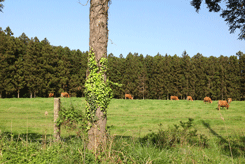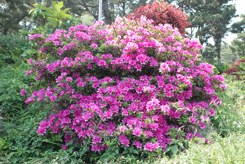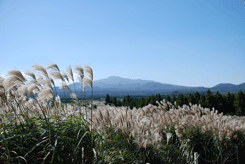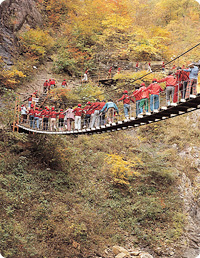National Park
 |
 |
 |
Hallasan
Hallasan (Jejudo)Mt. Halla was formed during volcanic eruption. It now rises in the center of the island to a height of 1950m, with the rest of the island sloping down from its summit and covered with dark gray volcanic rocks and rich volcanic soil. The top of the mountain rising from the charmingly attractive royal azalea blossoms is delicious-looking. In spring, pink azalea blossoms offer spectacular views to remember. It becomes a cool breeze and stays in the forest. It makes you throw away all your secular thoughts and you want to tumble over its rich greenness. Eulalia-liked coarse Autumn starts from the crevices of the rocks. Even far before getting prepared for the long winter, the mountain turns brown. Just like the last writhe of sunbeams at twilight. It seems like it had just turned into autumn, but then snow flowers start to bloom already.
Mt. Hallasan offers many trekking trails. Of the most popular trails Eorimok to Witsae Oreum shelter, taking about 4 hours 30 minutes round trip. Eorimok trail can be reached departing from Eorimok square via Sajaebi hill (2.4km) Manse hill (0.8km) Witsae Oreum shelter (1.5 km). Baengnokdam sections are closed off temporarily for the purpose of restoration today, and mountaineers miss the climb to the peak. Among the six trails in Mt. Halla, two trails, the Seongpanak and Gwaneumsa Trails, lead to the summit. The Eorimok and Yeongsil Trails will take you to Witsae Oreum Shelter. The Donnaeko Trail is closed under the plan to provide relief. Since camping and cooking are prohibited on all trails except for the Gwaneumsa camp site, According to the times of sunrise and sunset in each season, you should check admission times in advance. For the climbers' convenience there is a small kiosk at Azalea Field Shelter on the Seongpanak Trail and at Witsae Oreum Shelter on the Yeongsil and Eorimok Trails. Since the weather on Mt. Halla is very changeable, clothing should be well prepared.






